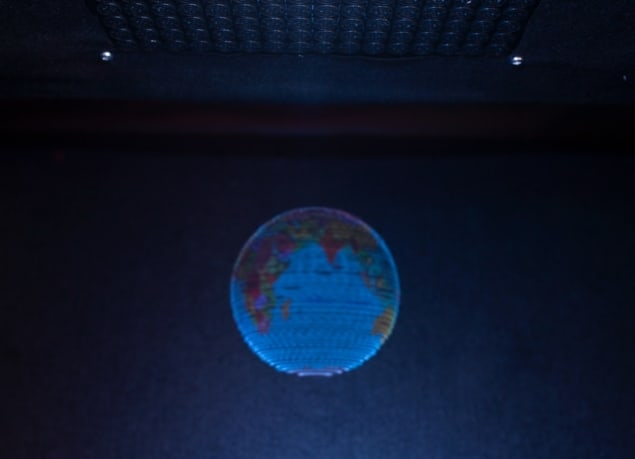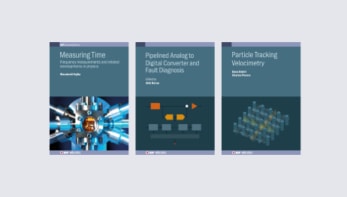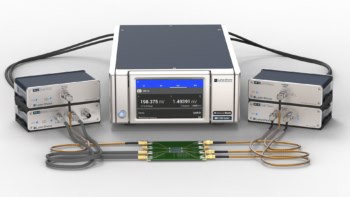
An ultrasound-powered, 3D visual display that can also produce audible sound and holograms that you can touch been unveiled by researchers at the University of Sussex. The team used the display to produce 3D images such as a torus knot, a globe, a smiley face and letters, as well as a dynamic countdown of levitating numbers.
The display is a type of sonic tractor beam, which uses ultrasound transducers to create acoustic holograms that can trap and manipulate objects in mid-air. The Sussex device uses two arrays of 256 speakers to levitate a single polystyrene bead, which traces out 3D images in mid-air while illuminated by coloured LEDs. The bead can move at speeds of almost 9 m/s (in the vertical direction), which is so fast that an image is drawn in less than 0.1 s. This creates the illusion of a single 3D image in much the same way as a cathode-ray tube creates a 2D image in an old television by rapidly scanning an electron beam across a phosphor screen.
“Our new technology takes inspiration from old TVs,” explains Ryuji Hirayama of the University of Sussex. “Our prototype does the same using a coloured particle that can move so quickly anywhere in 3D space that the naked eye sees a volumetric image in mid-air.”
Amplitude and phase
The display creates sound by vibrating the polystyrene bead at audible frequencies. This is possible because the device uses different elements of the ultrasound signal for levitation and vibration. Sussex’s Sriram Subramanian explains that the ultrasound phase information is used to create the levitation traps, which means that the amplitude is free to be used for other applications. In the Sussex display, amplitude modulation is used to generate audible sound.
To add tactile feedback, the device creates a secondary set of acoustic holograms, which produce enough pressure for you to feel them. But this does have an impact on the performance of the device, which switches between levitation and tactile holograms, producing levitation traps 75% of the time and tactile feedback 25% of the time. While producing just a visual display, the polystyrene particle can be moved horizontally at speeds of 3.75 m/s, but this drops to 2.5 m/s when tactile feedback and audio is added.
Subramanian says that the most significant part of this work is the speed at which they can now move a levitated object. Previous displays held particles for a few milliseconds in each new position before moving them again — but the new device keeps them moving all the time. “The particle is always accelerating and that is how we get the speed,” Subramanian explains.
Harry Potter theme park
Subramanian believes that one of the most obvious applications the display is at a theme park, using the example of a Harry Potter experience. “As a kid you can walk up to the system, you can hold your hand out and you can start feeling a magic spell in your hand. And then there is a fireball that is bubbling in front of you. You can have a very magical experience,” he says.

Ultrasound guides particle in a midair display
But there are other non-display applications for these techniques. For example, the researchers show that the device can be used to manipulate liquids and Subramanian says that this could, for example, be used to create 3D printers that manipulate different liquids simultaneously, to print a multi-material object. “We haven’t tested these things, but I think they are future projections of what we could do,” he explains.
Tatsuki Fushimi, at the University of Bristol, who unveiled a similar display, but without the tactile and audio elements, earlier this year, said that he is very impressed by the work.
“The future of acoustophoretic volumetric displays is very bright and this [research is] a significant step towards turning this science fiction idea into reality,” Fushimi says. “They were successful in enlarging the screen size of the display by increasing the number of ultrasonic emitters (we used 60 whereas their setup used 512). This means that the particle can be displaced along a larger region of space and with a greater velocity. There are many things to be done before commercialization, but it is exciting to think about the future of acoustophoretic volumetric displays, and I am sure that interesting applications will emerge as we further improve the performance of these devices.”
The display is described in Nature.



